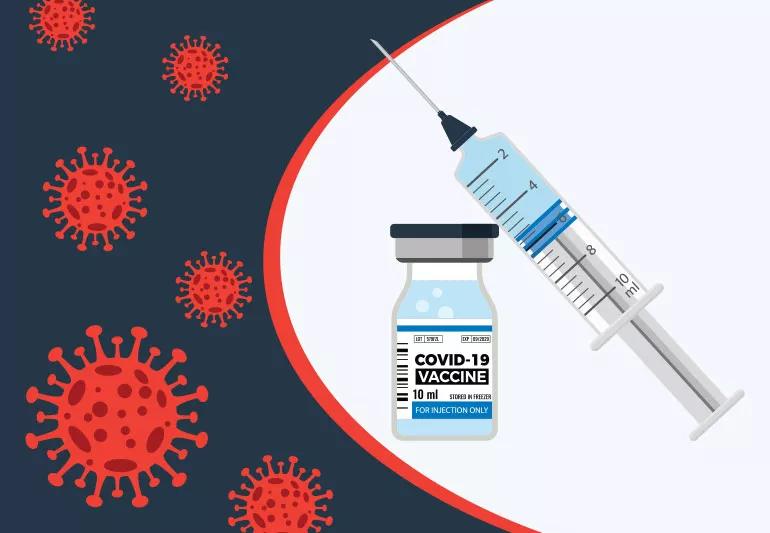Flu shots are not the only form of vaccine. As you see from the medical definition of "vaccine", all of the vaccines used for immunization fit the definition.
Vaccine
A preparation using a non-infectious element or relative of a particular virus or bacteria, and administered with the intention of halting the progress of an infection, or completely preventing it.
Mentioned in: Encephalitis, Hepatitis A, Hepatitis B, Hepatitis E, Smallpox
Gale Encyclopedia of Medicine.
The mRNA vaccines have been developed over decades. As you know, they work very well and have very low rates of adverse effects. We can go back over the numbers for vaccinated and unvaccinated people, if you like.
You've been misled about that, too. There was, for example, a relatively high rate of Guillain-Barre cases associated with influenza vaccines. Still very rare, a dangerous consequence:
The background rate for GBS in the Unites States is about 80 to 160 cases of GBS each week, regardless of vaccination. The data on the association between GBS and seasonal flu vaccination are variable and inconsistent across flu seasons. If there is an increased risk of GBS following flu vaccination it is small, on the order of one to two additional GBS cases per million doses of flu vaccine administered.
Overview of Guillain Barre Sydrome GBS, what causes it, and who is at risk of developing the disorder - CDC

www.cdc.gov
Guillian-Barre syndrome is an autoimmune disorder, which is rarely caused by immunizations. Fortunately, the rate for COVID-19 vaccines is quite low. Johnson and Johnson vaccine had the highest rates:
The likelihood of being diagnosed with GBS after receiving the Johnson & Johnson COVID-19 vaccine is extremely small — about 0.0008%.
The FDA recently issued a warning that the single-dose vaccine is associated with an increased risk of developing Guillain-Barré syndrome (GBS), a rare autoimmune disorder that attacks the body’s nerves. Here’s what you need to know.

health.clevelandclinic.org
Of course, those who embrace the narrative will ignore these facts, but they remain true. As you probably know, strokes, blood clots, and heart failure are many times more common in COVID-19 patients than in those who are immunized:
Patients hospitalized with severe COVID-19 infections who have high levels of the blood clotting protein factor V are at elevated risk for serious injury from blood clots such as deep vein thrombosis or pulmonary embolism, according to a new study by Harvard Medical School investigators at Massachusetts General Hospital.
On the other hand, critically ill patients with COVID-19 and low levels of factor V appear to be at increased risk for death from a form of coagulopathy that resembles disseminated intravascular coagulation (DIC)—a devastating, often fatal abnormality in which blood clots form in small vessels throughout the body, leading to exhaustion of clotting factors and proteins that control coagulation.
“Aside from COVID-19, I’ve never seen anything else cause markedly elevated factor V, and I’ve been doing this for 25 years,” said senior study author Elizabeth Van Cott, HMS professor of pathology at Mass General.
Patients with severe COVID-19 caused by the SARS-CoV-2 virus can develop blood clots in medical lines, such as intravenous lines and catheters, and in arteries, lungs and extremities, including the toes. Yet the mechanisms underlying coagulation disorders in patients with COVID-19 are still unknown.
https://hms.harvard.edu/news/covid-19-blood-clots
And it's not just hospitalized patients:
Are clots a risk for people with mild cases of COVID-19?
There are reports that clots are forming in people with COVID-19 who are at home and mobile — not just those lying flat in a hospital bed. But it’s not clear yet how common they are.
“When people are in the hospital, we’re more likely to do tests to look for clots. So we know more about this symptom in people with severe cases,” Dr. Tsuang explains. “In less ill patients who are recovering at home, we just don’t know yet.”
https://health.clevelandclinic.org/should-you-be-worried-about-blood-clots-with-covid-19/
These researchers looked at 150 consecutive ICU admissions with proven [2] COVID-19 infections. 11.7% of these patients developed clots, most often from clots that formed in the legs and traveled to the lungs, termed pulmonary emboli, further impairing the lungs' ability to absorb oxygen and release carbon dioxide. Matched patients with non-COVID acute respiratory distress syndrome, ARDS had a 4.8% incidence of DIC.
https://www.acsh.org/news/2020/04/28/why-are-covid-19-patients-dying-blood-clots-14747
So your chances of getting clots from the infection are about 117,000 times greater than your chance of getting clots from the vaccination. Pretty stiff odds, no?









